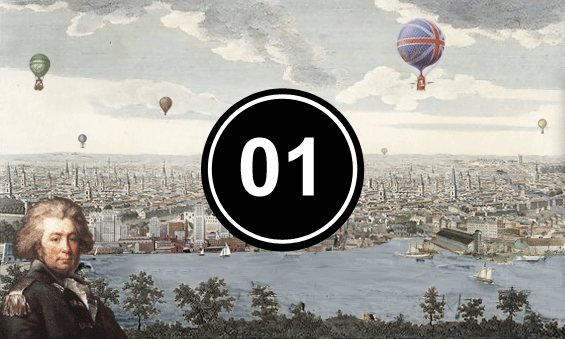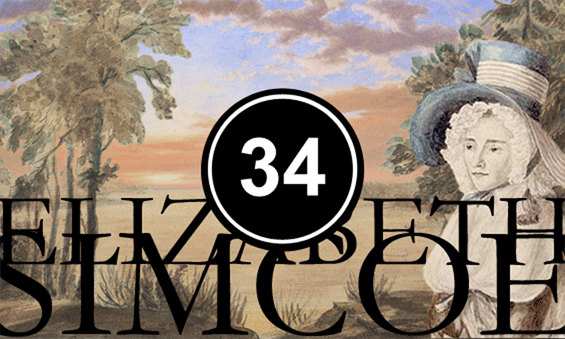UK TOUR DAY ELEVEN (THE RIVER OTTER): This is the mouth of the River Otter. It's in Devon, part of what they call the West Country, in the far south-west of England. The river has a connection both to the Simcoes — founders of Toronto — and to their family friends, the Coleridges. It also flows through some pretty spectacular scenery.
Here, where it meets the English Channel, the Otter is part of a World Heritage Site: the Jurassic Coast (which I wrote about yesterday). I reached its banks at the end of a long walk through the countryside and along the top of towering coastal cliffs. The sun was just beginning to set; the tide was coming in. People were riding the waves as they swept upstream (a bizarre sight for someone from Toronto) and into the marshes at the mouth of the river. You can just see the edge of those wetlands in this photo, on the right. They've been protected as a nature reserve, where saltwater and freshwater mix together in a green Eden of reedbeds and shallow pools. There are birds everywhere — and strange, colourful insects I've never seen before. There's so much biodiversity, in fact, that it's listed as a site of Special Scientific Interest.
The whole surrounding area, for miles and miles and miles around, is also one of England's official "Areas of Outstanding Natural Beauty". For most of its length, the Otter flows through rolling green and yellow fields, some of the most beautiful landscapes the United Kingdom has to offer. A few kilometers upstream, you'll find the picturesque village of Otterton, home to a watermill that's been spinning on that site for at least a thousand years. (That's where I had lunch during my walk.) And if you keep following the river upstream, you'll soon find yourself in another Area of Outstanding Natural Beauty: the Blackdown Hills. There, the rolling slopes get even bigger and more spectacular, some of them rise 800 feet into the air, so high they're almost mountains. From the top of some of those hills you can see far off to the distant horizon, all the way west to the rugged moors of Dartmoor National Park.
The Otter was a particularly important river for the Simcoes. They had connections to both ends of it. As I wrote yesterday, when they got back from Canada, they bought a summer home in Budleigh Salterton, the town at the mouth of the river. But by then, they'd already developed a close relationship to the Otter. Their estate was in the Blackdown Hills. The river ran just beyond the southern edge of it. And a small tributary of the Otter — the River Wolf — flowed right through their lands.
The Coleridge family lived nearby too, in the parish of Ottery St. Mary. The Reverend George Coleridge was the headmaster of the local school. And after the Simcoes got back from Toronto, that's where they sent their son Francis to study. The young boy had spent his earliest years growing up in Canada. And we still remember him with a subway station in Toronto — it got its name from the log cabin the Simcoes built on a spot overlooking the Don Valley. They jokingly named it after their toddler: Castle Frank.
The Reverend's brother, James Coleridge, was in the army. He served as aide de camp to John Graves Simcoe in the years after the founder of Toronto returned home. Simcoe had been made into a General. And when it looked like Napoleon might invade England, he was put in charge of the defenses for the entire West Country. According to Simcoe's biographers, James Coleridge would climb to the top of a nearby hill every morning to look through his telescope toward Simcoe's house. If there was a towel hanging in the window, it was a signal that Simcoe needed him. And Coleridge would rush to his General's side.
It was a third brother, however, who would go down in history as one of the most famous poets of all-time. Samuel Taylor Coleridge was born in Ottery St. Mary. And so, he grew up on the banks of the Otter. He even wrote a poem about it right around the same time the Simcoes were travelling to Canada.
It's called "To the River Otter" and it goes like this:
Dear native brook! wild streamlet of the West!
How many various-fated years have passed,
What happy and what mournful hours, since last
I skimmed the smooth thin stone along thy breast,
Numbering its light leaps! Yet so deep impressed
Sink the sweet scenes of childhood, that mine eyes
I never shut amid the sunny ray,
But straight with all their tints thy waters rise,
Thy crossing plank, thy marge with willows grey,
And bedded sand that, veined with various dyes,
Gleamed through thy bright transparence! On my way,
Visions of childhood! oft have ye beguiled
Lone manhood's cares, yet waking fondest sighs:
Ah! that once more I were a careless child!
The poem — and the poet's connection to the Simcoes — leaves me wondering what kind of impact Francis Simcoe's years in Canada had on him. Sadly, he didn't live long; he was killed as a young soldier fighting Napoleon in Portugal. But for those brief years, did he remember the Don River or Lake Ontario the same way Coleridge remembered the Otter? The same way children who've grown up in Toronto still do, more than 200 years later?
 |
| The Blackdown Hills |
The Reverend's brother, James Coleridge, was in the army. He served as aide de camp to John Graves Simcoe in the years after the founder of Toronto returned home. Simcoe had been made into a General. And when it looked like Napoleon might invade England, he was put in charge of the defenses for the entire West Country. According to Simcoe's biographers, James Coleridge would climb to the top of a nearby hill every morning to look through his telescope toward Simcoe's house. If there was a towel hanging in the window, it was a signal that Simcoe needed him. And Coleridge would rush to his General's side.
It was a third brother, however, who would go down in history as one of the most famous poets of all-time. Samuel Taylor Coleridge was born in Ottery St. Mary. And so, he grew up on the banks of the Otter. He even wrote a poem about it right around the same time the Simcoes were travelling to Canada.
It's called "To the River Otter" and it goes like this:
Dear native brook! wild streamlet of the West!
How many various-fated years have passed,
What happy and what mournful hours, since last
I skimmed the smooth thin stone along thy breast,
Numbering its light leaps! Yet so deep impressed
Sink the sweet scenes of childhood, that mine eyes
I never shut amid the sunny ray,
But straight with all their tints thy waters rise,
Thy crossing plank, thy marge with willows grey,
And bedded sand that, veined with various dyes,
Gleamed through thy bright transparence! On my way,
Visions of childhood! oft have ye beguiled
Lone manhood's cares, yet waking fondest sighs:
Ah! that once more I were a careless child!
The poem — and the poet's connection to the Simcoes — leaves me wondering what kind of impact Francis Simcoe's years in Canada had on him. Sadly, he didn't live long; he was killed as a young soldier fighting Napoleon in Portugal. But for those brief years, did he remember the Don River or Lake Ontario the same way Coleridge remembered the Otter? The same way children who've grown up in Toronto still do, more than 200 years later?
 |
| The River Otter |
 |
| The Otter Estuary Nature Reserve |
 |
| The Otter Estuary Nature Reserve |
 |
| The Otter Estuary Nature Reserve |
 |
| Otterton |
 |
| Otterton |
 |
| The East Devon Area of Outstanding Natural Beauty |
-----
I'll write more about Francis Simcoe one day. Maybe even soon, as one of these UK Tour posts. One of my favourite stories about him comes from his biography by Mary Beacock Fryer. She writes that when he got back to England, he was so used to life on ships that when he descended the stairs at the Simcoe's hotel, he did it backwards.
Read more posts about The Toronto Dreams Project's UK Tour and the
connections between the history of Toronto and the United Kingdom here.
|
| This post is related to dream 30 The Conference of The Beasts Francis Simcoe, 1796 |
|
| This post is related to dream 01 Metropolitan York John Graves Simcoe, 1793 |
|
| This post is related to dream 34 The Upper Canadian Ball Elizabeth Simcoe, 1793 |












No comments:
Post a Comment
Note: Only a member of this blog may post a comment.